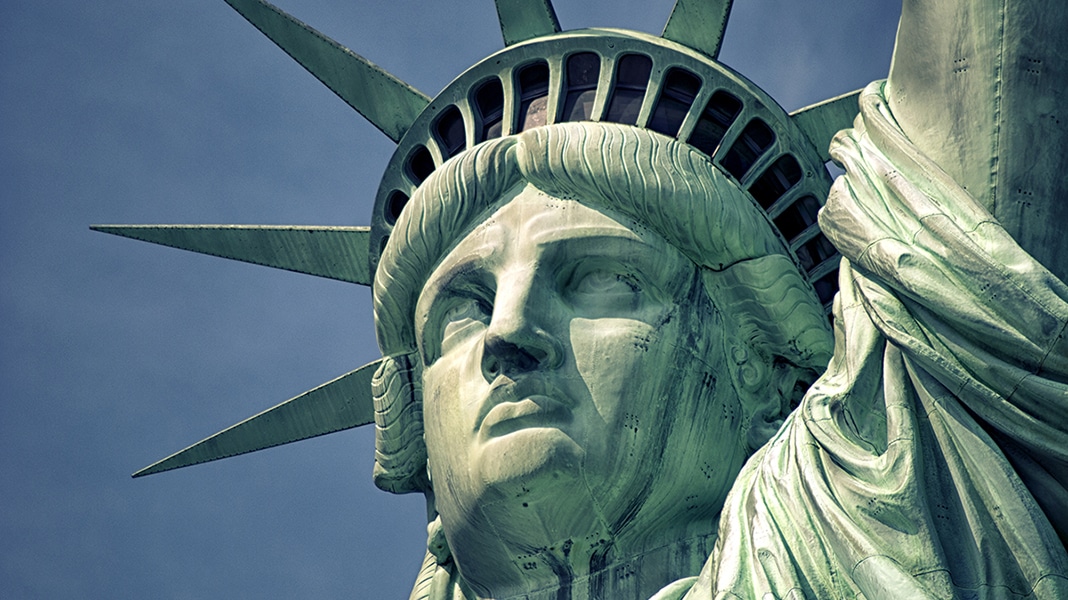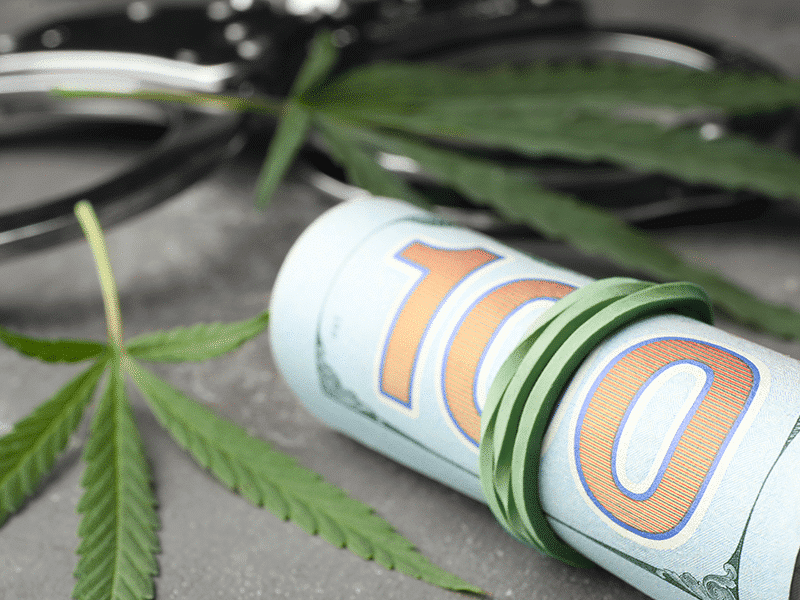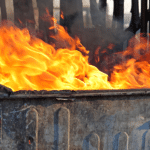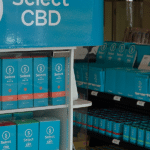After years of activist effort, New York state finally passed the Marijuana Regulation & Taxation Act (MRTA), signed into law by a politically besieged Gov. Andrew Cuomo. This is being hailed as a victory by advocates, who pledge to craft a model of legalization that will dismantle a long legacy of racism and oppression under the prohibition regime.

But the final version of the MRTA was a compromise bill, incorporating elements of Cuomo’s Cannabis Regulation & Taxation Act (CRTA), which activists had assailed as spoiler legislation. Among these is an unusual measure for taxation on the basis of THC content.
The lengthy legislative logjam broke on March 30, when the state Senate passed the MRTA by a 43-20 vote, swiftly followed by a 100-49 approval in the Assembly. Cuomo signed it into law the very next day.
“This is a historic day in New York — one that rights the wrongs of the past by putting an end to harsh prison sentences, embraces an industry that will grow the Empire State’s economy, and prioritizes marginalized communities so those that have suffered the most will be the first to reap the benefits.” Gov. Cuomo said.
Hard-Won Victory
It was a long time coming. The MRTA had been introduced in Albany every year since 2013, and met with dashed dreams every time. A turning point came in 2018, when Democrats took control of the Senate, long controlled by Republicans. Cuomo (who had signed a harshly limited medical marijuana law in 2014), sensed the progressive political shift, and finally, at first tentatively, embraced legalization.
But in 2019, Cuomo introduced his CRTA (predictably more restrictive than the MRTA), dividing the legislative effort. The legislative session closed that June without either bill passing — a bitter defeat for activists who had mobilized statewide for the MRTA. The following January, Cuomo pledged legal cannabis in 2020 — but this was derailed by the COVID-19 pandemic.
Almost certainly, what caused Cuomo to blink and agree to the MRTA (with a few concessions to his more restrictive model) is the fact that he is currently under fire from mounting claims of sexual harassment, as well as accusations of a cover-up of COVID deaths in the state’s nursing homes. The besieged governor badly needed some political capital.
On the morning of March 30, the MRTA’s sponsor in the Senate, Liz Krueger of Manhattan, announced a “three-way agreement” between the Senate, Assembly, and Cuomo “on legalizing adult-use cannabis in a way that foregrounds racial justice, while balancing safety with economic growth, encouraging new small businesses, and significantly diminishing the illegal market.”
The bill’s Assembly sponsor, Crystal Peoples-Stokes of Buffalo (who is the chamber’s majority leader), proudly declared, “We’re reversing 90 years of prohibition.”
Compromise Legislation
David Holland is a New York City criminal defense attorney who is both president of the NYC Cannabis Industry Association and executive director of Empire State NORML. He tells Project CBD that the law Cuomo signed is “much more like the MRTA” that activists had long been fighting for than the governor’s own version of the legislation. “This is almost a wholehearted adoption by Cuomo of all best aspects of MRTA.”
The law brings regulation of all cannabis — adult-market, medical, and hemp — under a new Office of Cannabis Management (OCM). The OCM is to officially operate under the State Liquor Authority, but will be overseen by its own five-member Cannabis Control Board. Three members of the Board are to be appointed by the governor, with the Senate and Assembly to each appoint one member. The OCM is also to have an executive director appointed by the governor — but with the advise and consent of the Senate.
All in all, the governor is sacrificing the degree of control over the OCM that he had sought to grab through his initial legislative proposal (the CRTA). “It’s not perfect, but it’s so much better than it could have been,” says Holland. “The Legislature gets two appointments on the Cannabis Control Board rather than none, and the Senate gets to vet the executive director.”
“There’s also greater clarity about what funds are earmarked for,” Holland notes. Once fully functional, the adult-use cannabis industry is anticipated to generate more than $350 million in tax revenues per year. Under the new law 40% is to go a new “social equity” fund, 40% for schools, and 20% for drug treatment and education.
Homegrown Allowed, Decrim Expanded
The law allows possession of up to three ounces of herbaceous cannabis or 24 grams of concentrate, when state residents are outside their homes. Inside their homes, a generous five pounds is allowed, provided it is in a secured location.
The five-pounds-at-home standard is related to the law’s provision for home cultivation. Six plants per person (three flowering and three immature) or 12 per household will be legal — starting in six months for those in the medical marijuana program or 18 months for “recreational” growers (allowing time for regulations to be promulgated).
Very significantly, while the CRTA had sought to actually increase the penalties for cannabis in quantities not covered by the law, the MRTA lowers them — building on the expanded decriminalization passed by the Legislature (and signed by Cuomo) in June 2019 as a kind of consolation prize to disappointed MRTA advocates.
Under New York’s original 1977 decrim law, up to an ounce of herbaceous cannabis was punishable only by a $200 fine. Under the 2019 reform, the fine for less than one ounce was dropped to $50, with $200 imposed for possession of between one and two ounces. More than two ounces remained a misdemeanor, punishable by jail time. Under the new MRTA, more than three ounces (outside the home) but less than 16 ounces is punishable by a fine of $125, payable to the OCM. The misdemeanor does not kick in until 16 ounces. Felony charges kick in at five pounds (when such possession is “criminal”).
Taxing THC
The new MRTA contains one harebrained measure that Holland calls “a Cuomo invention adopted from the 2021 CRTA” — taxation on the basis of THC content, in addition to a flat sales tax. The THC tax, or potency tax, imposes 0.5 cents ($0.005) per one milligram of THC in herbaceous flower, 0.8 cents ($0.008) per milligram in concentrates, and three cents ($0.03) per milligram in edibles.
Then there’s a 13% sales tax, divided 9% to the state and 4% to the county. Of the county’s portion, 75% is to go to the local municipality.
As Holland points out, three cents per milligram in a candy bar containing 1,000 milligrams of THC means a $30 tax — on top of the sales tax and purchase price.
The policy is not without its logic. Overdoing it with highly potent edibles is famously a risk, especially for the inexperienced. “It’s designed to be a deterrent with concentrates and edibles, to disincentivize large-scale purchases at one time,” Holland concedes. “I can understand that, but I’m not sure this is the best way to go about it.”
“We’ve never seen that for level of proof in alcohol,” Holland says. “There isn’t a sin tax based on the potency level of, say, wine versus a cordial. You’re not paying for the difference in the potency of alcohol.”
Descheduling for Real
The text of MRTA states that the law “remove[s] marihuana from the schedule of controlled substances.” That’s the old-fashioned spelling used in the state Public Health Code, the relevant legislation. Article 33 of the Health Code was amended after passage of the federal Controlled Substances Act in 1970, which established the system of drug “schedules,” also imposed internationally by the 1961 Single Convention on Narcotic Drugs. Notoriously, cannabis was placed in the most restrictive category — Schedule I, along with heroin and LSD — reserved for dangerous drugs with no medical value.
The irrationality of this placement is today, of course, glaring. There have been several bills on Capitol Hill in recent years to have cannabis resecheduled or descheduled, as well as litigation demanding this. There have also been initiatives at the United Nations to alter the classification of cannabis under the Single Convention.
Yet most state laws continue to conform to the schedules in the Controlled Substances Act — even in those states that have “legalized.” Really, what has changed in these states is a matter of enforcement.
New York now begins to change this. It is true that civil and criminal penalties remain for quantities exceeding those legalized under the MRTA. In the recently enacted New Jersey legalization bill, the question was actually parsed very finely. If you read the small print, cannabis and THC are only descheduled in quantities and products covered by the law. This has been assailed by some as a “pseudo-rescheduling.”
Under New York’s MRTA, cannabis and THC are descheduled altogether. Comparing the New York and New Jersey laws, a spokesperson for Sen. Krueger’s office told Project CBD: “We’ve basically just taken a different approach to achieve a similar outcome. We descheduled cannabis, but kept restrictions on possession or production/sale outside of the regulated market. This is similar to current law in New York regarding alcohol or cigarettes — neither are scheduled drugs, but that doesn’t mean the state can’t impose limits.”
Local Control & Legacy Operators
With passage of the MRTA, New York joins a handful of states and jurisdictions around the country that allow “social consumption” of cannabis at private establishments. The law also explicitly allows for home delivery of cannabis products. The OCM is to give out licenses for social consumption sites and delivery services as well as for cultivation, processing, distribution and retail sale outlets.
However, all these activities will require municipal permission and oversight — and there is an explicit opt-out for municipalities. This is another measure adopted from Cuomo’s CRTA, and clearly crafted to appease conservative sentiment. It raises the prospect of “cannabis deserts” across more conservative areas of the state, where users and providers alike are forced onto the illicit market.
And this brings us to the sensitive question of whether the MRTA’s equity program will truly allow legacy operators — those with years of experience as growers or retailers (“dealers”) on the illicit market — to come in from the cold.
Promises were made to New York state’s communities that have been most impacted by cannabis prohibition and the war on drugs — which of course overwhelmingly means communities of color. “The bill we have held out for in this state will create a nation-leading model for legalization,” Krueger said upon casting her vote. “New York’s program will not just talk the talk on racial justice, it will walk the walk.”
This was echoed by the grassroots advocates who fought for the MRTA. “Today, the Assembly and the Senate modeled what democracy actually looks like when the legislature allows progressive movements to lead towards justice,” said Jawanza James Williams of activist group VOCAL–NY. “We did not fight simply for legalization’s sake, but worked for years to craft legislation rooted in racial and economic justice, in an effort to repair harms while also setting a new standard for anti-racist, class-conscious, and gender-expansive policymaking.
Racial Justice
The Legal Aid Society, which provides lawyers for indigent defendants, said in a statement: “For decades, New York State’s racist war on marijuana ensnared thousands of our clients — nearly all of whom are from Black and Latinx communities — resulting in needless incarceration and a host of other devastating consequences that inevitably arise from contacts with the criminal legal system. This landmark legislation will right many of those injustices, and we applaud our progressive leaders in Albany for helping to secure this victory.”
Data recently issued by the Legal Aid Society found that in New York City in 2020, Black and Latin residents made up over 93% of those arrested for cannabis violations. And while overall cannabis arrests have plummeted in New York City since the administration of Mayor Bill de Blasio de-emphasized enforcement, the racial disparity persists in those arrests that have continued under “carve-outs” in the policy — such as smoking in a way as to cause a nuisance, determined (of course) by the police officer.
The MRTA sets a goal of 50% of cannabis business licenses being issued to “Social Equity Applicants” from prohibition-impacted communities. Priority is also to be given to women-owned businesses, minority-owned businesses, distressed farmers, and service-disabled veterans.
But Holland says he sees “no clear-cut pathway for legacy operators to get into the marketplace. So there is reason to believe that there won’t be a fast transition where we legalize and the legacy market goes away.”
And while the MRTA does contain a provision for expungement of convictions for cannabis within quantities now permissible under the new law, that doesn’t mean that arrests will end. Penalties for illegal sale remain for anyone who sells cannabis or THC-laden products without a license — and for simple possession above the permitted quantities.
Very encouragingly, the prohibition on public use is lifted — cannabis smoking is now permitted everywhere that cigarette smoking is. Localities may place their own limits (e.g., New York City does not allow smoking in parks or near schools), but the penalty is limited to a $25 fine or 20 hours community service. Driving under the influence is to be treated the same way as alcohol. More “drug recognition experts” are to be hired by the state’s police forces to determine if motorists are under the influence of cannabis (a rather more complicated matter than with alcohol). Possession by those under the age of 21 will be punishable by a $50 fine.
Challenging the Stigma
Perhaps the most significant long-term achievement of the MRTA will prove to be the cultural shift it represents. Statements from a new generation within the Empire State’s political establishment indicate that old prejudices are fast eroding.
Media reports have been giving voice to concerns from the cultural-conservative opposition that legalization will lead to greater crime, youth toking, and high driving. But this was forthrightly answered by Bronx Assembly member Victor Pichardo, who said in the floor debate before the MRTA vote: “The original sin of marijuana prohibition in this country has nothing to do with quality of life, it has nothing to do with kids, it has nothing to do with public safety. It has everything to do with racism. Period, full stop.”
Assembly member Zohran Mamdani of Queens (himself also a hip-hop artist) virtually came out of the closet as (at the very least) a one-time user, stating: “I’m proud to be here today to debate the legalization of adult use of marijuana, also known as Loud, Sour D., Burnt, Mary Jane, Kush, Green, Pot, Weed, Zaza, a Jazz Cigarette… In the course of this debate, I have heard many of our colleagues across the aisle suggest that smoking or ingesting marijuana is an indicator of lawlessness, a deteriorating quality of life, it makes one lazy and a burden to society, it serves as a gateway drug. In the midst of this fiction and frankly coded language, I’d also like to present a fact — which is that smoking or ingesting marijuana may also lead to you becoming an elected official.”
Bill Weinberg, a Project CBD contributing writer, is a 30-year veteran journalist in the fields of drug policy, ecology and indigenous peoples. He is a former news editor at High Times magazine and produces the websites CounterVortex.org and Global Ganja Report. © Copyright, Project CBD. May not be reprinted without permission.
Recommended Readings
The Many Gifts of Cultivating Cannabis
Cultivating a CBD-rich cannabis garden is a form of “nature therapy.”
Marijuana Arrests after Legalization
The medical properties of cannabis have been a major factor in the push to legalize but the importance of social justice can’t be overstated.
Data Distortion: Use & Abuse of Cannabis Science
Misinformation can masquerade as science, especially when it comes to cannabis. Learn how to spot faulty research.












